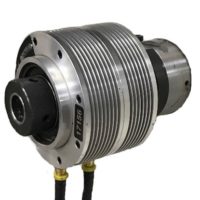My customer, Michael, called the other day regarding an issue with runout of a collet on a lathe. He explained to me that he was using an expanding collet on a pullback style collet chuck, but was unable to get the collet to run true. After going over all the steps on how to properly machine the expanding collet (Which Michael did correctly,) I became somewhat perplexed. I inquired about the age of his collet chuck and he informed me that it was from the 1980’s. Having been in this industry for 38 plus years and enjoyed some disco moves myself, I realized that more than likely his aging collet
This may come as a shock, but a collet chuck used on a daily basis will eventually have a wear issue. When you take a look at your collet chuck your first thought likely is, “What can be wrong with it?” It’s a block of steel that has a machined hole in it to accept a collet. Well, the problem occurs in the tapered angle of the ID of the chuck. Think about it! You have this collet chuck you’ve been using almost every day for the last 20 plus years. The collet is going back and forth (Opening and closing) in this collet chuck. The surface of the collet and ID of the collet chuck have been rubbing each other for all these years. Eventually, the ID taper of the collet chuck starts to form a rounded shoulder where the taper and straight portion of the collet bore intersect. This can result in having runout issues. It is even more prevalent when using expanding collets as the design of the sleeve fits so snugly into the collet taper of the collet chuck. But, if the rounded shoulder exists, then the sleeve is unable to seat which will cause…you guessed it: dreaded runout. In most cases the collet chuck can be salvaged by simply remachining or regrinding the taper.
Do not hesitate to contact us for more info: 800-423-5145






